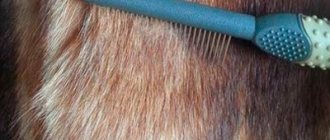Shelf life of propolis
Experts do not advise using bee glue to treat ailments if it has expired. Today in pharmacies and specialized stores the product is presented in different forms: dry, in the form of balls, alcohol tincture or ointment. Each type has its own shelf life.
Dry natural
Solid adhesive has the longest shelf life, which varies from 5 to 10 years. In this case, the following conditions must be created for it:
- stable temperature readings in the room within + 20…+ 25°C;
- a dry, dark place, reliably protected from exposure to the sun’s rays and sudden temperature changes;
- there should be no foreign odors present in the room, no chemicals should be stored, especially household chemicals or fertilizers;
- It is recommended to wrap the substance in dry form for storage in parchment and place it in a wooden container.
In balls
For ease of use and preservation, propolis is rolled into small balls or made into original sausages from the raw materials. In this case, such balls are packaged in parchment or wax paper, or placed in dark glass containers. During storage, the main thing is to prevent contact of the substance with air, so the container is tightly closed with a lid.
Important! When storing propolis in a closet or pantry, you should make sure that there are no substances with a strong aroma nearby that can easily absorb the product.
A dry, cool, dark place with a temperature no higher than + 25°C is suitable for storing propolis balls. The optimal place in the apartment will be a storage room. The kitchen is considered not the best location for the product, since the temperature inside is not stable.
Due to the switched on stove and oven, the temperature readings jump up and down, and the air humidity also varies, which has a negative impact on the condition of the bee glue. In the form of balls, under the necessary conditions, the substance is able to retain its beneficial qualities for 5–7 years.
On alcohol
Since propolis tincture contains alcohol, it can last for quite a long time in this consistency. In this case, the conditions in which the alcohol tincture should be located are similar to how the product is kept dry.
In this case, it is necessary to emphasize that the storage location should be inaccessible to small children
Important! When storing propolis in the pantry, the room should be regularly ventilated.
Experts recommend pouring the infusion into a dark glass container and placing it in a dark room (closet, pantry), where stable temperatures and average humidity prevail. In the form of an alcoholic infusion, propolis can be used for 4–5 years. The use of undiluted infusion is strictly prohibited. To use it internally, it must be diluted with plenty of water.
Ointment
Another form of propolis is an ointment, which is recommended to be kept in a dry, fairly cool and dark place, at a temperature of + 15 ... + 22 ° C. The container with ointment must be placed away from direct exposure to sunlight, high humidity and sudden temperature changes. If all storage conditions are met, the shelf life of a store-bought product is 6–8 years. If the ointment is prepared with your own hands, then its shelf life does not exceed three months.
Important! Propolis in its pure form is stored much longer than ointments and tinctures prepared from it, so experts recommend not buying products based on bee glue in large quantities, but purchasing only the required dosage.
What is propolis and how to choose it
Uza or propolis is a building material for a beehive, which is why it is also popularly called bee glue. Considering its characteristics, we denote:
- The structure is a viscous, dense, sticky substance, reminiscent of molten wax.
- Color – brown-gray, with an admixture of brown or green tint. If the composition contains plant pollen, yellow or orange inclusions are possible.
- The smell is intense and specific; upon deep examination, essential oils are felt.
- The taste is pungent and even bitter.
Fresh bee glue is rolled into balls or formed into cylinders. This is how beekeepers sell it. You can more often see dried propolis on sale; it is presented in the form of sticks, powder and other forms. For the convenience of preparing infusions based on it, I recommend choosing crushed, but carefully evaluate its freshness. The crushed mass loses its properties faster.
Interesting! Propolis (Greek πρόπολις); bee glue, uza - a resinous substance from brown to dark green, produced by bees to seal cracks, regulate the permeability of the entrance, disinfect the cells of the honeycomb before sowing eggs by the queen, as well as isolate foreign objects in the hive. Propolis is a sticky substance that bees collect from the spring buds of trees (poplar, alder, birch, etc.) and modify with their enzymes. Wikipedia…
Propolis collected in the fall during the preparation of bees for wintering is considered the most useful. It is enriched with active compounds, so it retains its properties longer.
Having studied the chemical composition of beeswax, we can say that it retains its beneficial properties for quite a long time - 5-7 years. But a lot depends on the quality of the conditions created for its storage. Healing tinctures based on alcohol, oil or fat last the longest. Such substances act as preservatives, but do not destroy the healing properties. The aqueous extract can be kept exclusively in the refrigerator for no more than 1 month.
Video: how to identify a fake
Pollen, beebread, propolis. How to identify a fake?
Watch this video on YouTube
Rules for storing the product at home
Compliance with the following recommendations will help preserve the pleasant taste and beneficial properties of the product:
The place where propolis is stored should be dry, warm and clean. The air temperature should not exceed 25ºС. It is forbidden to place products with a strong specific odor near propolis.
In this proximity, the glue will not only absorb unnecessary aromas and volatile substances that shorten its shelf life, but will also attract the attention of insects, rodents, and pathogenic microorganisms. The bars and pieces of glue should be wrapped in parchment or polyethylene, and then placed in a clean and dry glass container (a wooden box will also work)
It is better if the glass is dark and the lid is lapped.
- At home, the optimal place to store glue is the pantry. In the kitchen there are too often changes in humidity and temperature, which will not benefit propolis.
If the rules for containing the product were violated for some reason and propolis has lost its original appearance, but its shelf life has not yet expired, you should not get rid of the substance. It is not necessary to use it internally; you can get by with medicinal lotions, compresses and baths.
In an apartment or house, there are several places where consumers most often store propolis: a refrigerator, a pantry or a regular kitchen cabinet.
In a refrigerator
Despite the fact that most consumers prefer to keep bee glue in the refrigerator, this is not a suitable place for preservation. The fact is that at low temperatures the product loses its density and elasticity, and high humidity in the refrigerator quickly negates all its medicinal qualities.
In the closet
Kitchen cabinets are not considered the best place to store food. Even if they are not exposed to direct sunlight and light, they are not protected from sudden temperature changes, which have a negative impact on the quality of the glue.
Did you know? Even when boiled in water, the product is able to retain all its medicinal properties for one hour.
In the pantry
Experts agree that the ideal place in an apartment to store bee glue is a pantry, which maintains low, stable temperatures and an average level of humidity. The main thing is that the room is free of various types of garbage, rubbish, household chemicals, substances and products with pronounced odors.
Like any other substance, beeswax in its pure form will be stored for a long period of time only if all conditions for its storage are met.
Lighting
The shelf life of propolis in solid form also depends on the container. It is necessary to select a tank that will protect the organic matter from direct sunlight. It should be isolated from places where chemicals are stored.
Humidity
Humidity is an important indicator of microclimate. To ensure safe storage conditions, the humidity level should be 65%. It is not recommended to store propolis in the refrigerator due to high humidity. In addition, the density and composition of the substance changes, which negatively affects the beneficial properties of the product.
Conclusion
Pure propolis is able to retain its beneficial properties for a long time, and medicines based on it have a slightly shorter shelf life. However, the optimal form of storage should be determined individually, because ointments and alcohol solutions are less demanding on storage conditions. If it is impossible to create the required temperature conditions at the storage location, it is better to make blanks from the product immediately.
Do you want to understand better than others?
- Terms and conditions for storing raw and processed meat in a household refrigerator - Meat products are a necessary part of the human diet. They contain many vitamins, macro- and microelements, as well as other substances without which the human body cannot…
- Selection and options for storing avocados in the refrigerator - From a biological point of view, avocados are a fruit, despite the fact that there has been controversy about this for a long time. Such disagreements are related to taste characteristics. Pulp...
- Features and shelf life of fresh and prepared mushrooms in the refrigerator - After harvesting mushrooms, you do not always have the strength to immediately process it. Therefore, there is a need to place the product in storage. Shelf life depends on the type and method...
- Shelf life of boiled buckwheat in the refrigerator - The habit of stocking up on food is good because it saves time and effort, but the issue of saving ready-made food should be treated with special attention, because eating spoiled...
- Terms and rules for storing kefir in the refrigerator - The duration and rules for storing fermented milk products are regulated by strict requirements, since the presence of active compounds in such items limits the period...
General rules
Propolis, including all bee products, have the strongest biological potential. To preserve it at home, you must adhere to the following general rules:
- Avoid exposure to ultraviolet radiation. Sunlight has a detrimental effect on organic compounds. With prolonged irradiation, they are destroyed and lose their properties. Therefore, it is necessary to store propolis in any form in dark containers or boxes, in a room where the sun does not penetrate.
- Maintain humidity conditions. Despite the fact that propolis consists of oily compounds, resins and wax, it should not be exposed to high humidity or excessive dryness. The optimal air humidity in the room should be in the range of 40-60%. Deviations from these parameters must be compensated for by the tightness of the packaging and regular visual monitoring of safety.
- Do not expose to high temperatures. Propolis withstands freezing well without loss of properties. But it reacts poorly to sudden temperature changes. It is optimal to store it in a room where it is stable and does not rise above 25 degrees.
- Keep away from substances with a strong odor or hazardous compounds. Propolis has the property of hygroscopicity and actively absorbs all aromas and fumes from the environment. If you place it next to toxic substances, fertilizers, chemicals, spices, perfumes - all their properties will very quickly become not the most pleasant addition to the healing product. Therefore, it must be stored in relative isolation.
A refrigerator is not suitable for storing dry propolis due to a number of parameters: high humidity, inability to isolate it from food, risk of a sudden change in temperature. The best choice would be a pantry or closet that performs its functions.
During storage, propolis must be regularly inspected and checked so that its visual characteristics do not change. If changes appear in the appearance, it means that the storage mode does not correspond to the required one, and it is necessary to correct it.
Propolis storage
Dishes and packaging
Frequent contacts with the external environment - light and air - harm propolis. Therefore, in order to use it rationally and not remove it from the package several times, it is formed into small briquettes, balls or “cakes”. One package should be enough for 1-3 times of use.
Fresh propolis is placed on foil or a parchment sheet and wrapped in several layers. Under no circumstances should you use newsprint, as printing ink contains a large amount of harmful substances and heavy metals.
The briquette should be placed in a plastic bag and tied tightly. Such packages are placed in wooden boxes or glass containers for storage. A dark glass container with a tightly screwed lid is ideal, since excess light is detrimental to the healing properties of bee glue.
The room in which propolis is stored is also important.
Fridge
The most common place for storing food, including propolis. However, due to the low temperature and high humidity, the refrigerator may not be a good place to store this medicinal product. Cold has a detrimental effect on bee glue - it begins to crumble, and high humidity kills all its healing properties. In addition, the refrigerator often contains the smell of meat, fish and other “odorous” foods. Such proximity is also harmful for propolis.
Closet
Storing propolis in wall-mounted kitchen cabinets is also not recommended. Most kitchen furniture is located close to a gas or electric stove, under the influence of which the air temperature in the room changes. Its periodic increase and decrease contributes to a decrease in the beneficial properties of bee glue. If propolis is stored in the bottom drawers of kitchen cabinets, then they should not be located near the sink or trash can compartment.
Pantry or closet
If the pantry is free of junk, old blankets or other things that attract dust, then it can be an ideal place to store propolis. The pantry is almost always dark and dry. Such an internal climate will extend the shelf life of bee propolis to 7-10 years.
How to store it correctly?
To prevent various impurities, dirt and harmful substances from getting into propolis, it is necessary to approach the issue of its storage very carefully. Everything must be sterile, you even need to pour it onto parchment or paper so that it does not come into contact with the table surface again.
Unacceptable!
It is unacceptable to keep propolis from honey next to toxic substances, poison for pests, pesticides and substances that emit a sharp and strong odor. The room should not be too hot and light; dampness is also a strict taboo.
Packaging and tableware
Usually propolis from honey is packaged in dry paper, parchment, and sometimes in plastic bags. Then it is placed in dry and clean glass containers or plywood boxes. For greater convenience, propolis is rolled into lumps. It is best to choose tinted glassware with a tight-fitting lid. Excessive light can destroy the beneficial qualities of the product.
Room
The room in which it is kept must be well ventilated. During long-term storage, the composition of bee glue may change somewhat, but its antibacterial properties will remain unchanged, so you can take it and not be afraid - it will help in any case.
Fridge
Many people mistakenly believe that there is no better place for storage than a refrigerator. This is a common misconception. Bee glue begins to crumble when frozen, and excessive humidity, which cannot be avoided in the refrigerator, will destroy all the healing effects. In addition, very often we keep meat, fish, and vegetables in the refrigerator, which spread their strong and ingrained smell.
Wall cabinets
It is not recommended to keep propolis from honey in kitchen cabinets. Very often they are located next to a gas stove, so the air temperature constantly fluctuates. This is not good for our beekeeping product.
Pantry
The ideal option would be to store propolis in the pantry. It's dry, dark and not too humid. The main thing is that there is no trash or debris there.
How to store alcohol tincture?
Alcohol tincture has many beneficial properties. It treats inflammation of the oral cavity, larynx and nasopharynx. Taking it internally can get rid of the flu, relieve various inflammations, it helps with stomach ulcers and is a very effective remedy in the fight against tuberculosis. Due to the alcohol content, it retains its excellent properties for a very long period, but all this is guaranteed only by correct storage conditions.
Conditions
The conditions for storing propolis alcohol tincture are practically no different from the storage conditions for dry matter. It is worth considering that dry bee glue can last much longer, while an alcohol tincture retains its properties only for three to four years. The infusion should be kept in a cool and dark place, out of reach of children.
Application
People of any age can take this medicine, but you should carefully monitor the dosage and method of use. If you doubt that the infusion is still fresh, then you need to limit yourself to compresses and lotions, without using it internally. This tincture in its pure form is not recommended for children and pregnant women; it can only be taken orally when diluted with milk or honey.
Under no circumstances should you take an undiluted infusion of alcohol, as you may get burned. You can dilute it with ordinary water, most importantly – filtered.
How long can you store
Propolis is used not only in its pure form, but tinctures, ointments, oils, and syrups are prepared on its basis. And each such product has a therapeutic effect on different diseases of the body. Whether it's just abrasions or a gastric ulcer. Again, the shelf life of propolis depends on the form in which you want to store it.
- So, if all the rules are followed, dry, it can be stored for 7-10 years.
- Propolis tincture with alcohol in a dark place can be stored for 3-5 years.
- Ointments last longer - up to 8 years, in a cool, dry place.
- How long does the tincture on water last? Unlike alcohol, no more than 10 days.
- We store the extract in water for no more than 5-7 days in a clean container.
- Milk containing bee glue should be consumed immediately.
- Butter should be kept in the refrigerator for up to 3 months.
As we see, the shelf life of dry propolis is much longer than medicines based on it.
But it can also deteriorate faster. This is easy to understand; when you hold the product in your hands, it will be fragile and begin to crumble.
If the shelf life has expired, then propolis and any medicines based on it cannot be used. You can get poisoned.
What to store in
You should pay a little attention to choosing a suitable container. Some materials may not be environmentally friendly, as they release toxic substances when interacting with food. Balls of dry natural propolis should be placed in such a way as to eliminate the possibility of sticking. It is recommended to wrap each of the balls in its own packaging.
Wax paper
Usually propolis is rolled into lumps of 100-150 g of any shape. The selection of the desired form depends on the preferences of the beekeeper. Wax paper is considered one of the most ideal options for wrapping dry propolis.
Landscape sheets
There are many options that are ideal for wrapping dry propolis, but parchment paper is most often used. You can also replace it with landscape sheets. When choosing a material, you should avoid colored napkins and paper with letters printed on it.
Food foil
Food foil is an environmentally friendly material that is recommended for use in the food industry. Aluminum is non-toxic and does not emit harmful substances when interacting with food. It allows you to maintain beneficial properties for a long period of time, depending on the shelf life of propolis.
Plastic bag
Cellophane products made from polypropylene, polyethylene, polyesters are particularly easy to use, which is one of its important advantages. Disadvantage: They can release toxic substances. Therefore, before using a bag designed to wrap dry propolis, make sure it is environmentally friendly.
Darkened glass containers
The advantage of dark glass containers is the protection of bee products from ultraviolet rays. In addition, you should select containers that will close tightly. Make sure the lid is completely closed first to limit the possibility of foreign odors getting inside the container.
Basic storage rules
If you want to use propolis for several years, then you should follow the following recommendations:
- 1. Do not allow dust or any impurities to come into contact with propolis. When preparing a substance for storage, try to avoid contact with the table. It is best to spread clean parchment. Only how can you ensure the long shelf life of propolis.
- 2. Store propolis only in a place where there are no substances with a strong odor. Do not keep it near pesticides or fertilizers.
- 3. The shelf life of this healing substance is significantly reduced by exposure to sunlight, so keep it in a dark place. In addition, you need to monitor the air humidity in the room. In this case, the air temperature should not exceed 25 °C.
Where is the best place to store such a beekeeping product?
Many beekeepers are sure that it is best to store propolis at home in the refrigerator. And this is their main mistake. At low temperatures, the substance quickly loses its natural density. In addition, the humidity in the refrigerator is too high. The influence of these factors leads to the fact that the substance quickly loses its medicinal properties.
Kitchen cabinets are also not the best place to store propolis. They are located too close to the gas or electric stove. In this regard, sharp changes in air temperature occur. As a last resort, you can put it in the drawers of the lower cabinets of the kitchen unit. But only those that are located at a sufficient distance from the stove, sink and trash can.
But in this case, it is impossible to accurately answer the question of how long such a product can be stored.
At home, the ideal place to store propolis is the pantry. It is there that it is dry and dark enough for all the miraculous qualities of this substance to be preserved. The main thing is to make sure that the pantry is clean and free of strong smelling substances. The pantry must be ventilated periodically.
Proper packaging
It is not enough to properly prepare such a beekeeping product for storage; you also need to choose the right packaging. Parchment or clean paper is suitable for these purposes. Do not use newspaper under any circumstances, as harmful substances and dyes can penetrate the propolis.
You can also use a plastic bag. The propolis wrapped in paper must be placed in a glass container. Keep it clean and dry. You can also use a wooden box. For more convenient storage at home, propolis can be rolled into small balls. The lid of the selected container should close tightly.
Propolis tincture
Medicinal tinctures are made from bee glue. Bee glue is kept in alcohol and thus the finished medicine is obtained. Alcohol tincture of propolis helps with many colds that are difficult to cure with medications, tuberculosis, ulcers, and joint problems.
Thanks to alcohol, all active substances and healing properties are preserved in the folk remedy for a long period of time. Such a medicine can be beneficial for 3-4 years, but for this the tincture must be stored correctly:
- Use a darkened glass bottle;
- Do not put the tincture in the refrigerator;
- Make sure the room is not too hot.
As with natural propolis, the ideal place to store propolis tincture is in the pantry. And yet, it is important that the product is kept out of the reach of children.
Choosing a storage location
Where to properly store propolis, if not in a dry, clean and dark room that closes tightly. Considering the beneficial substances of uz, which can change under the influence of certain factors, you should devote a little more time to this issue. Still, the shelf life of propolis is several years, not a day or two.
Fridge
The question is often asked whether propolis will be stored in the refrigerator, taking into account the preservation of the beneficial properties of essential oils and resins. However, it is not recommended to do this due to the high humidity and the proximity to commercial goods. A variety of foods with less or more intense odors can be stored in the refrigerator. All these factors can negatively affect the beneficial substances of beeswax.
Pantry
How long can bee products be stored in a darkened pantry? Make sure that the temperature will be maintained at the same level - not lower than 15 degrees Celsius. There are no other contraindications for storing bee products in a darkened pantry.
Before storing, it is recommended to divide the propolis into small portions and wrap each in individual packaging.
Before storing, it is recommended to divide the propolis into small portions
It could be:
- parchment;
- foil;
- cling film;
- paper bag;
- plastic bag.
Do not wrap the product in cloth, newspapers or magazines.
Packages with propolis are placed in a clean, dry container - mold will not begin to develop in it. A ceramic or tinted glass jar with a well-screwing lid is suitable. If there are no suitable containers, place the propolis in bags, tie them and place them in a wooden box or cardboard box.
The correct place to store propolis should be clean, dark, dry and cool.
Kitchen Cabinet
A cabinet in the kitchen may well meet the listed requirements, this is influenced by its location.
Be sure to read:
What is the shelf life of rolls and sushi after cooking?
Propolis should not be in:
- near heat sources (radiators, stove, oven), where the temperature is several degrees higher than in the entire room;
- near the sink, sewer drain;
- in a compartment with a trash can, household chemicals, and products with a strong odor.
Fridge
An additional argument against such storage is the strong odors of meat, fish and other products lying in the refrigerator.
Pantry, closet
The pantry is perfect for storing propolis - there it will be protected from the sun, heat, and moisture.
The correct place to store propolis should be clean, dark, dry and cool.
But the room should not be used for storing old things - sources of dust. And don’t forget to ventilate the pantry weekly, otherwise unnecessary odors will build up.
Where to store propolis? As we have already figured out, it can only be stored in a cool place.
- A pantry would be ideal for us. It's cool, dark, and dry. This will be the best option.
- Kitchen cabinets, shelves, drawers are not suitable for us. Since we are constantly cooking in the kitchen, the temperature there is not constant. Which will also have a detrimental effect on our beekeeping product.
Let's look at how to store propolis in the refrigerator and whether it can be done separately.
In a refrigerator?
Contrary to all opinions, propolis cannot be stored in the refrigerator. There it will quickly lose all its healing properties.
- There is high humidity in the refrigerator. Which will ruin all the healing properties of the product.
- Due to the low temperature, it will lose its healing properties and will crumble.
- There are many sources of foreign odors. Which is also unacceptable when storing bee glue.
The only exceptions include propolis-based oil. For other medicinal products, tinctures, ointments, refrigerator conditions will be disastrous.
Signs of a quality product
Propolis, or oza, is a resinous mass produced by bees.
Insects use it as a building material for hives: they cover cracks, disinfect honeycomb cells and get rid of pests. Bee glue is used by humans for medicinal and preventive purposes. It is not difficult to find out whether propolis is of high quality. There are several ways to do this. It is necessary to pay attention to its appearance, consistency and taste:
- The texture of the bond is sticky and viscous, similar to wax. Over time it becomes harder.
- The color depends on the trees from which the resin is collected. It can be dark green, brown, light brown, with a brown tint. The shade is uniform, without spots or sharp transitions. Yellow or orange indicates a high concentration of pollen in propolis.
- Strong and distinct aroma with essential oils and honey notes. The smell is natural, without foreign impurities.
- Bitter-burning taste. When chewed, the natural and fresh bee product sticks to the teeth. Then a burning sensation and numbness of the tongue appear.
- In warm weather the bond is soft, in the cold it hardens. Melts at +80 °C.
- Propolis dissolves completely in ethyl alcohol, but poorly in water.
If you burn a piece of a quality product, the smell of incense will appear.
Structure
When choosing a substance, it is worth considering its purity and homogeneity. The product is usually sold in the form of a ball. Therefore, before purchasing, it is recommended to cut the substance to evaluate its structure. The inside of propolis should be the same as the outside. The consistency should be almost homogeneous. There may be some crumbs and wax inside.
Color
The normal color range is from green-brown to yellow-green.
Aroma
The natural substance is characterized by a spicy honey aroma. It is quite durable and resinous. Over time, the smell does not evaporate.
Taste
The substance should be chewed slowly before purchasing. After 10-20 movements, the product will heat up and begin to stick to your teeth. After 5-10 minutes, a slight burning sensation will appear in the mouth. It is felt especially strongly when swallowing. Minor numbness may also occur. High-quality propolis tastes very pleasant. It may taste a little bitter. After half an hour of chewing, the product disintegrates, and the burning sensation increases significantly. In general, the quality of a product is assessed by the speed at which bitterness appears and its sticky structure.
To evaluate organoleptic characteristics, a sufficient amount of the substance is required. It is advisable to take a piece weighing at least 1 gram.
Where to store ointment and oil
The composition of propolis ointment may include various additional components:
- vegetable oils (olive, flaxseed);
- wax;
- honey;
- petrolatum;
- butter;
- herbal decoctions.
Ointments with honey retain their beneficial properties for a long time; the component is a good preservative. Products based on Vaseline or wax have longer shelf life. It is better to prepare ointments with vegetable or butter for 4-5 applications.
Propolis oil is a special product for external use. In glass it retains its beneficial properties for 3 months. It is sometimes sold in plastic bottles. The storage time of propolis in the form of oil in plastic is reduced to 30-45 days.
How to prepare propolis for storage
For the greatest effectiveness of products prepared with propolis, it is important to properly prepare it for storage. This should be done immediately after collection. Most often this is the beginning of June - the end of August.
It is best to choose propolis of a large fraction. It is important to ensure that it is clean, without adhering dirt, dust, or other foreign components.
Large pieces of propolis must be crushed. An apiary centrifuge is suitable for this. It consists of 2 cylinders, at the bottom of which there are blades. The crushed bee glue is discharged through a hole in the wall of the device. For ease of collection, you can attach a plastic bag to it.
The canvases soaked in cord are removed from the hives at the end of autumn, preferably in November, and then kept in a dry place until frost sets in. To facilitate the separation of propolis from the canvases, they can be placed in the refrigerator for half an hour. In this case, the shelf life of propolis in solid form directly depends on how correctly this procedure was carried out.
Basic savings tips
In order for propolis to be used for a long time, the following basic rules must be followed during storage:
- Ultraviolet. Sunlight has a bad effect on propolis; prolonged irradiation destroys its beneficial properties. Therefore, to store propolis at home you need a room where the rays of the sun do not penetrate. It is better to store it in dark containers or boxes.
- Humidity. The optimal humidity should be in the range of 40-60%; if there is a deviation from these parameters, then there must be compensation in the form of visual inspection and sealed packaging.
- High temperatures. Propolis can withstand freezing well, but it does not react well to sudden changes in temperature. It is better when the temperature does not rise above 25 degrees.
- Pungent odor and dangerous compounds. Propolis has an interesting property: it absorbs all odors and fumes from the environment that surrounds it. If you store propolis near substances such as perfumes, chemicals, spices, fertilizers, then it will quickly absorb their aromas. Therefore, storage must be isolated.
Packaging selection
An equally important aspect is the choice of packaging. Even if you have collected propolis correctly, everything can be ruined by incorrectly selected packaging.
Many beekeepers recommend storing propolis in parchment paper (but not in old newspapers or other materials that have been treated with a chemical pigment). If you have bee glue powder, you can make an envelope. The product in the form of balls or sticks must be stored separately, each in its own piece of paper, after which it must be placed in a dark glass container. But if you don’t have anything like that, then you can put it in a regular plastic bag, seal it tightly and put it in a cardboard box.
Solution dosage
Different diseases have their own consumption rates. How to drink propolis:
- For a cold. For instillation into the nose, as a rule, no more than two drops are used three times a day. The course of treatment should be at least ten days. Then the treatment is stopped and a break is taken.
- How to take an aqueous solution of propolis for bronchitis? To treat the upper respiratory tract or bronchitis, you will need inhalation with propolis. To do this, brew boiling water and pour a small amount of alcohol or water tincture into it. The patient leans over the container and breathes in the steam. Phytoncides easily penetrate inside with the help of heat and affect organ tissue. After the procedure, it is also recommended to take a tablespoon of infusion.
- Ear infection. Using propolis tincture, you can cure acute or chronic otitis media, mild hearing loss and other ear problems. To do this, you will need an alcohol tincture of propolis diluted in water. Before applying the compress, the ears should be cleaned with a cotton swab dipped in hydrogen peroxide. This procedure is recommended to be carried out twice a day. Do not keep a wet swab in your inflamed ear for too long. Two or three minutes is enough.
- How to drink propolis when treating thyroid diseases? In such cases, propolis infusion is consumed orally in an amount of no more than one tablespoon three times a day. Doctors advise drinking the drug thirty minutes before meals. In order for the composition to work, you will need to take it daily for one month. Then the treatment is interrupted and continued only after six months.
- Diabetes. Experts recommend taking bee glue with milk. To do this, combine half a teaspoon of tincture with half a glass of milk and drink before meals. This remedy is used in the treatment of type 2 diabetes. Typically, the course of treatment is one month, although in the first two weeks the dosage should be less than in the next fourteen days.
- Use of an aqueous solution of propolis in gynecology. The diluted tincture can be used for douching or washing. It helps to cope with thrush or cervical erosion. In order to get rid of the fungus, proceed as follows. One tablet of “Furacilin” is diluted in a glass of water and douched. Next, a cotton swab is moistened in a solution of bee glue and inserted into the vagina. It is advisable to do this procedure late in the evening before going to bed. If this is not possible, then a tampon can be inserted during the day. Doctors advise douching again after the tampon is removed.
- To prevent atherosclerosis and strengthen blood vessels, a course of treatment of one and a half months will be required. During this time, consume two tablespoons of the composition per day.
- In case of poisoning accompanied by diarrhea and vomiting, fairly large doses of propolis will be needed. The water tincture is diluted in boiled water in a ratio of two tablespoons per liter of liquid. Two liters of the composition should be drunk during the day. This remedy will not only neutralize harmful microflora, but will also restore water balance and saturate the body with lost microelements.
- Diabetes. Propolis infusion can improve the condition of patients with diabetes. To do this, bee glue dissolved in water is consumed in an amount of fifteen milliliters no more than three times a day. The course duration is usually twenty-five or thirty days. To avoid addiction, treatment should be interrupted. Only after a few months can you continue taking the drug.
The same applies to the treatment of hemorrhoids. First, douching is carried out and only then a tampon soaked in infusion is inserted. You can also improve the condition of your hair and facial skin using a solution of bee glue.
Natural bee propolis “Kalinyak”
KALINYAK LLC
DESCRIPTION:
Propolis is a bee glue that bees use to seal cracks in the hive; bees use propolis to shorten the entrance when cold weather sets in, attach frame hangers to the folds of the hive, and polish the honeycomb cells where honey, pollen are stored and larvae develop. Bees use propolis to wall up mice, lizards and snakes that have entered the nest and were killed by poison, and thereby prevent the decomposition and rotting of their corpses.
In appearance, propolis is an amorphous resinous mass or crumb, heterogeneous in structure. Its color, depending on its geographical origin, place of deposition in the hive, contamination and shelf life, can be gray, yellowish-gray, yellowish, reddish, yellow-brown, brown, dark brown, greenish-gray, greenish-brown.
You can find propolis that is practically odorless, but in most cases it emits a specific strong pungent aroma, reminiscent of the spicy smell of plant sources of resinous substances and essential oils. The taste of propolis is bitter and pungent.
The consistency of propolis depends on temperature, and it changes over time. At temperatures below -15 °C, propolis is a hard, brittle, easily crumbling substance; at higher temperatures, especially above 30 °C, it becomes plastic and soft. Freshly harvested propolis is sticky and sticky. Over time and exposure to sunlight, it hardens and becomes brittle. When heated, propolis gradually softens. It usually goes into a fluid state at 64-69 °C.
Propolis contains more than 50 substances. Resins are formed mainly by organic acids, including cinnamic, 4-hydroxy-3-methoxycinnamic, caffeic, ferulic, etc. They also contain cinnamic alcohol. Balms are complex products containing essential oils, tannins, terpenoids, and aromatic aldehydes. Essential oils determine the aroma and partly the taste of propolis. They are substances of semi-solid consistency, light yellow in color, with a strong, peculiar odor and bitter taste. Propolis wax is usually soft and light-colored.
Determination of propolis quality
Methods for determining the quality of propolis remain imperfect and do not make it possible to reliably give a commercial and sanitary assessment of this product. When researching propolis, it is first necessary to consider for what purpose it is intended. The greatest requirements must be placed on propolis, which is intended for medicinal purposes and for the preparation of preparations from it. In these cases, propolis should be collected and stored only in apiaries that are free from infectious bee diseases. If there are such diseases in apiaries, the collected propolis can be used only for technical purposes after it has been neutralized with chemicals or high temperature.
In terms of organoleptic indicators, benign propolis must meet the following requirements. Fresh propolis is yellow or reddish-brown in color; old, lying down - dark. Fresh propolis is a sticky mass resembling resin. When stored for a long time, it becomes fragile.
The degree of contamination of propolis is determined by boiling it 4-5 times with two volumes of wine alcohol. Then the mixture is filtered and the filter is additionally washed with hot alcohol. Solid, alcohol-insoluble propolis particles remain on the filter. The quantity and quality of these particles determine the degree of mechanical contamination.
A filtered alcohol solution of propolis is basically a solution of resins and wax. It is transparent, brown in color, with a pleasant aroma. If the alcohol solution does not meet these requirements, then the propolis is considered low quality or falsified.
Medicinal products made from propolis at home
PREPARATION OF AQUEOUS SOLUTION OF PROPOLIS 1:10
Pour 100 ml of boiled or distilled water into the vessel, add 10 g of crushed propolis (powder), close the lid and place in a water bath, boil for 40-60 minutes. Stir the contents of the vessel periodically with a wooden stick. Cool. Store in a sealed dark glass container at room temperature in a cool place, protected from light and sunlight. The shelf life of the solution with sediment is about 5-7 days; without sediment - about 7-10 days in the refrigerator. An aqueous solution of propolis is a transparent yellow-brown liquid with a pleasant odor.
Accept:
- Orally: one tablespoon three times a day before meals.
- Externally: wet-dry dressings.
PREPARATION OF OIL PROPOLIS 1.5:10
Place 100 g of unsalted butter in a vessel (porcelain glass or glass jar), add 15 g of crushed propolis and about 5 ml of boiled water, close the lid and place in a water bath, boil for about 15 minutes. Stir the contents of the vessel periodically with a wooden stick. Filter the hot solution through 1-2 layers of gauze into a clean dark glass jar, transfer the remainder to the gauze, squeeze out and add to the filtrate. Stir the hot propolis oil solution with a glass or wooden stick until it cools. Cover with a lid and store in the refrigerator. Oily propolis is a semi-solid mass of yellow-brown color with a pleasant odor. Shelf life – 3 months.
Applicable:
- Orally: for children, one teaspoon three times a day before meals; adults: one tablespoon three times a day before meals.
- Externally: rub into the skin, ordinary gauze bandages (ointment on the damaged surface, over bandages, or gauze), bandages “under compressor paper” - ointment on the affected surface, 3 layers of bandage or gauze, over compress paper (plastic film), then bandage bandage or adhesive plaster.
PREPARATION OF ALCOHOL SOLUTION OF PROPOLIS 1:10 (PROPOLIS TINCTURE 10%)
Pour 900 ml of 70° ethyl alcohol into a dark glass vessel, add finely ground (powder) propolis in an amount of 100 grams. Close the vessel with a lid. Infuse the solution at a temperature of 20-25° for 2-3 days with periodic stirring with a wooden or glass spatula. Filter the brown solution through a paper filter into a clean, dry dark glass vessel, transfer the residue to the filter, and squeeze out. An alcohol solution of propolis is a transparent liquid of red-brown color with a pleasant odor. Shelf life – 5 years.
Accept:
- Orally: adults 20-30 drops per tablespoon of water before meals 3 times a day. Not recommended for children under 14 years of age.
- Externally: rub dry into the affected area or apply with a brush to a wound (ulcer, etc.)
AQUATE-ALCOHOLIC EMULSION
Propolis tincture 10% - 1 part, boiled water - 9 parts. Water at room temperature is poured into an enamel (glass) bowl, and with constant stirring, propolis tincture is introduced in a thin stream. Prepare the water-alcohol emulsion immediately before use.
ALCOHOL-OIL EMULSION
Propolis tincture 10% - 1 part, butter (vegetable oil, glycerin, fish oil, vitamin A oil solution) - 9 parts. The butter is slightly heated in an enamel (glass) container to transform it into a liquid state. The propolis tincture is introduced in a thin stream, stirring constantly. After completing the introduction of propolis, remove from heat and continue stirring for 5-10 minutes. Store in a cool, dark place. Shelf life – 1 year.
PROPOLISE-WAX INHALATION
Propolis – 1 part, wax – 1 part. Mix crushed propolis and wax in an enamel bowl and heat in a water bath. When the healing vapors of propolis are released, inhale them, covering the head and the source of the healing vapor with a sheet (blanket).
PROPOLIS “CANVAS”
Linen fabric is soaked with a solution (propolis tincture 10% - 1 part, water - 2 parts). It is attached to the sore spot either with a large adhesive plaster (on top of the “canvas”), or with a bandage, having previously covered the “canvas” with polyethylene (compression paper) in the form of a compress.
PROPOLIS-HONEY OINTMENT (PROPOLIS HONEY)
Propolis tincture 10% - 1 part, honey - 9 parts. Add propolis tincture in a thin stream into an enamel (glass) container with honey, stirring constantly. Continue stirring for 5-10 minutes until a homogeneous mass is formed.
Accept:
- Orally: one tablespoon 3 times a day.
- Externally: in the form of ointments, rubs, compresses.
Sitz baths with water-alcohol emulsion
A water-alcohol emulsion is prepared in an enamel basin. The patient (patient) sits in the basin, legs spread wide apart, to wash the perineum, genitals, and anus with the solution.
Session – 15-20 minutes. Water temperature 36-37 degrees.
WET-DRY BANDAGES (WITH AQUATE-ALCOHOOL EMULSION)
The affected surface (purulent wound, trophic ulcer, weeping eczema, etc.) is bandaged with a loose-dry bandage, then watered with a water-alcohol emulsion and constantly moistened as the bandage dries.
"PROPOLIS CAKES"
Dry propolis, ranging in size from a millet grain to the size of a pea, softens in warm hands like plasticine and is applied to the sore spot, attached to the skin with a larger adhesive plaster. Applies for up to 5 days.
Treatment of diseases with propolis and its preparations
When describing this section, we will indicate only the methods and remedies described in detail in the previous section. It is not necessary to use all the remedies listed below together. Choose the combination that is most suitable for you individually.
DISEASES OF THE NERVOUS SYSTEM AND MOVEMENT ORGANS
Radiculitis, osteochondrosis:
- propolis tincture inside;
- rubbing propolis tincture externally;
- propolis “canvases”;
- rubbing in an alcohol-oil emulsion;
- Spread a mixture of honey, sunflower oil, propolis tincture (1:1:1) on mustard plasters and apply to the sore spot, securing with a plaster or bandage;
- Rub propolis-honey ointment dry, followed by heating with a table lamp (15-20 minutes), then rinse with warm water. Rubbing this ointment in a steam room (sauna) is very effective.
Migraine:
- propolis tincture inside;
- rubbing propolis tincture externally.
Impotence:
- propolis tincture inside;
- sitz baths with water-alcohol emulsion;
- rubbing alcohol-oil emulsion of propolis into the suprapubic area;
- rubbing propolis with honey into the sacral area, warming it with a table lamp for 15-20 minutes, then rinsing with warm vodka;
- propolis “sticks” on the sacral area at night;
The course of treatment is 1 month. After a two-week break, repeat.
Bed-wetting:
- alcohol tincture of propolis inside;
- sitz baths with water-alcohol emulsion;
- rubbing propolis ointment into the suprapubic area in the evening;
- At night, apply propolis “sticks” to the lower abdomen.
The course of treatment is 1 month. After a two-week break, repeat.
Insomnia:
- propolis honey inside;
- 20 drops of tincture in half a glass of warm milk at night. Each time you wake up, take another 20 drops with milk (or with water).
Multiple sclerosis, epilepsy, vegetative-vascular dystonia, polyneuritis, arachnoiditis:
- alcohol tincture of propolis orally for at least one month.
Rheumatoid arthritis, arthrosis-arthritis:
- propolis tincture inside;
- rub the alcohol-oil emulsion into sore joints;
- propolis “canvases” for the night;
- rub propolis-honey ointment into the joint, followed by heating for 15-20 minutes under a lamp, then rinse off the remaining ointment with warm water.
SURGICAL AND SKIN DISEASES
Hemorrhoids, rectal fissures, chronic prostatitis, prostate adenoma, perineal itching:
- propolis tincture inside;
- sitz baths with water-alcohol emulsion;
- enemas with water-alcohol emulsion (after cleansing);
- a napkin with an alcohol-oil emulsion on the perineum and anus at night.
Methodology: gauze (bandage) is folded into 6-8 layers in the form of a narrow napkin up to 10 cm long, and the emulsion is applied on one side. In a deep bend (after washing the perineum in a sitz bath), press a gauze pad with swimming trunks or panties.
Trophic ulcers, difficult-to-heal wounds, burns, frostbite, eczema, pyoderma, vulgar sycosis:
- propolis tincture inside;
- in the acute period (wetting period), when the wound surface is wet and there is copious discharge, rinse the wound surface with a water-alcohol emulsion, followed by applying a wet-dry dressing with the same solutions. When the wound dries, apply an alcohol-oil emulsion, refreshing the bandage daily.
Eczema, burns, painful calluses (wetting phase):
- Grate 100 grams of raw potatoes on a fine grater, add a teaspoon of honey and 40 drops of propolis alcohol tincture, mix. Apply a thick layer of gauze (1 cm), apply to the skin and bandage. After 2 hours, remove the bandage and remove from the skin. Reapply the bandage (up to 4-5 times during the day and at night).
Eczema (wet phase):
- 1 glass of oak bark decoction (1:5), add a teaspoon of propolis tincture. Apply to the skin in the form of wet-dry dressings.
Ulcers on the skin of the sacrum:
- Apply propolis tincture to the ulcer with a brush 3-4 times a day.
Skin itching, epidermophytosis, trichophytosis, microsporia, rubrophytosis and other fungal skin lesions:
- propolis tincture inside;
- apply alcohol tincture of propolis with a brush to the affected surface 3-5 times a day;
- alcohol-oil emulsion, bandage under compress paper;
- for extensive lesions - propolis foam baths.
Alopecia areata:
- propolis tincture inside;
- rub propolis tincture locally;
- at night, apply a bandage with an alcohol-oil emulsion under compress paper.
Psoriasis:
- propolis tincture inside;
- for individual plaques of small sizes - propolis cakes;
- for large areas of the lesion, use an alcohol-oil emulsion under compress paper;
- propolis “canvases”;
- propolis-foam baths.
Bedsores:
- propolis-honey ointment locally.
Erysipelas:
- propolis tincture inside;
- propolis “canvases” topically.
Cracks in hands and soles:
- baths with water-alcohol emulsion;
- alcohol-oil emulsion under compress paper overnight.
CARDIOVASCULAR DISEASES
Cardiac ischemia:
- propolis tincture inside;
- propolis “canvases” on the interscapular area at night;
- alcohol-oil emulsion, rub into the interscapular area in the evening and in the morning.
Atherosclerosis, hypertension, anemia:
- propolis tincture inside;
- propolis with honey inside.
LUNG DISEASES
Tuberculosis:
— propolis in butter, one tablespoon taken orally before meals, 3 times a day for 3-9 months.
Chronic bronchitis, bronchial asthma:
- propolis tincture inside;
- rub propolis tincture into the chest;
- propolis “canvases” on the interscapular area;
- propolis-wax inhalations;
- rubbing an alcohol-oil emulsion into the chest;
- boil 200 ml of water in a saucepan, pour half a teaspoon of propolis tincture into it. Wrap yourself up and breathe over the pan (inhalation with propolis tincture).
Sore throat, chronic tonsillitis:
- propolis tincture inside;
- lubricate the tonsils with propolis-honey ointment with light pressure. Swipe directly with your index finger;
- propolis-wax inhalations (propolis tincture);
- rinsing (5-6 times a day) with water-propolis emulsion.
DISEASES OF THE GASTROINTESTINAL TRACT
Peptic ulcer of the stomach and duodenum:
- propolis tincture, propolis oil, propolis honey inside;
- rubbing propolis tincture onto the stomach area - externally.
Chronic gastritis:
- propolis tincture, propolis water inside one and a half to two hours before meals;
- propolis ointment, rub externally into the stomach area.
Liver cirrhosis, cholecystitis, giardiasis, dysbacteriosis, colitis, habitual constipation:
- propolis tincture inside.
KIDNEY AND URINARY TRACT DISEASES
Glomerulonephritis, pyelonephritis:
- propolis tincture inside;
- “canvas” of propolis on the kidney area.
Chronic cystitis, chronic urethritis:
- propolis tincture inside;
- rubbing an alcohol-oil emulsion into the suprapubic area;
- “canvas” on the lower abdomen at night;
- sitz baths with water-alcohol emulsion.
WOMEN'S DISEASES
Cervical erosion, vaginitis, trichomoniasis, chronic gonorrhea:
- propolis tincture inside;
- douching with a water-alcohol emulsion 3-4 times a day;
- vaginal tampons with alcohol-oil emulsion 2-3 times a day and at night;
- sitz baths in the evening with a water-alcohol emulsion.
Inflammation of the tubes and uterine appendages:
- propolis tincture inside;
- rubbing an alcohol-oil emulsion into the lower abdomen;
- propolis “canvases” on the lower abdomen at night.











